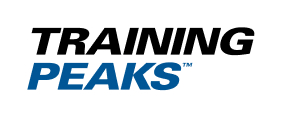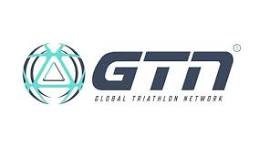Learn how to pace your next Sprint Triathlon and race faster than ever…
Sprint triathlons are relatively short compared to other kinds of triathlons, but the word “sprint” is misleading.
These events usually comprise a 750m swim, 20km bike and 5km run, and will typically take 60 to 90 minutes – or more. That’s hardly a sprint, so you’ll need to pace yourself sensibly on race day otherwise you’ll fade badly towards the end.
Most people get carried away in the excitement of race-day and go as hard as they can. As the race progresses their pace gradually gets slower and slower, and it feels tougher and tougher. To some extent, you can get away with this “do or die” strategy in sprint triathlons, but it’s certainly not the most optimal way to race.
If you want to race your best-ever Sprint triathlon, you need to plan your pacing strategy in advance. Even pacing has been shown to be more effective than going off too hard and fading. Not only will you race faster, but you’ll enjoy the event more too. You’ll be the one who overtakes people in the second half, rather than the one being overtaken.
Essentially, the idea is to race at an even pace (with a few exceptions) throughout the 750m swim, 20km ride and 5km run. To do this, you need to identify the best consistent pace you can hold for 60 to 90 minutes.
Avoid the trap of viewing a Sprint triathlon as being like three separate races. Don’t try and set personal bests in each discipline, because it won’t work. A sprint triathlon is one continuous race of 60-90+ minutes, rather than three separate events. And that’s how you need to treat it when it comes to pacing.
Here’s how to approach each discipline and pace it smartly.
How To Pace a Sprint Triathlon Swim (750m)
If the swim is a wave or mass start, during the first minute or two of the swim, find your place in the group and hopefully get in the draft zone of similar-level (or slightly faster) swimmers. After this ease back a little, right through to the end of the swim. If you’re a nervous swimmer, start steady and stay out of harm’s way. For a pool swim, find your rhythm and settle into your pace as soon as you can.
There are several ways to pace yourself, including heart rate, pace and Rate of Perceived Exertion (RPE). However, from a practical point of view, using RPE (feel) works well – it saves you trying to look at your watch.
Check our Triathlon Race Pace Calculator to help guide your pacing strategy.
Feel free to accelerate occasionally if it helps you to get on someone’s feet. Remember that drafting behind other swimmers will make it at least 10% easier for a given speed. Swim smarter, rather than just swimming harder.
How To Pace a Sprint Triathlon Bike (20km)
The bike section of a Sprint triathlon typically involves a 20km (12.4 mile) cycle time trial. Think of it more like a 25 to 30-mile cycle time-trial and you’ll be in the right ballpark in terms of pace judgement. Smart pacing throughout the bike leg will reap you rewards on the run. Keep enough in reserve for a great run (but not too much!).
Use a power meter (if you have one) to pace yourself on the bike, with heart rate and RPE (feel) as backup measures. If you don’t have a power meter, just use heart rate and RPE instead.
Check our Triathlon Race Pace Calculator to help guide your pacing strategy. If you’re not sure what your Threshold Heart Rate or your Functional Threshold Power is, I’ll show you how to test for them below.
If possible, use all three intensity measures in this order of importance: 1. Power Output, 2. Heart Rate, Perceived Exertion.
How To Pace a Sprint Triathlon Run (5km)
You’ll be pretty tired by the time you even begin the run. Realistically you can expect to run one to three minutes slower than you would be in a standalone 5km run race. If you pace the swim and bike properly, you increase your chances of running well. Imagine you’re doing a standalone 10km or 10-mile running race and you’ll be nearer the mark in terms of pacing.
Check our Triathlon Race Pace Calculator to help guide your pacing strategy. If you’re not sure what your Threshold Running Pace or Threshold Heart Rate is, you can find out below.
Using all three of the methods (RPE (feel), HR and pace) is best as none of them are entirely reliable in isolation. Many variables can affect them, such as wind direction, gradient and cardiac drift (an increase in heart rate due to heat stress).
Fitness Tests
In this blog, we’ve talked about using measures like Threshold Running Pace, Heart Rate and FTP. What if you don’t know yours? Well, you can do a few basic tests to find out. They are simply measures of fitness that can help you create a pacing strategy:
- Test Your Bike Functional Threshold Power and Threshold Heart Rate (via My Pro Coach Help Center)
- Test Your Threshold Running Pace and Threshold Heart Rate (via My Pro Coach Help Center)












